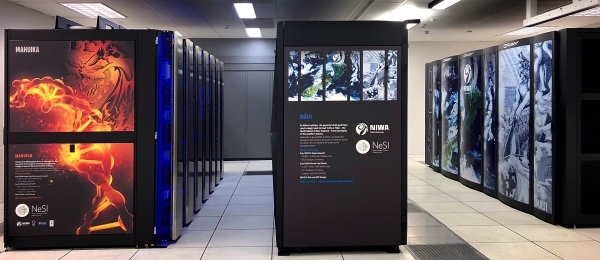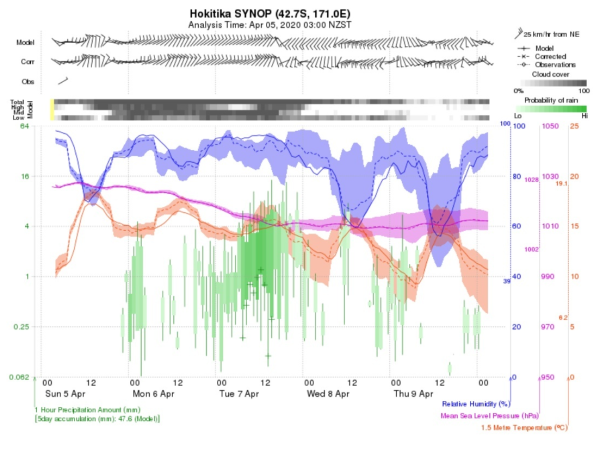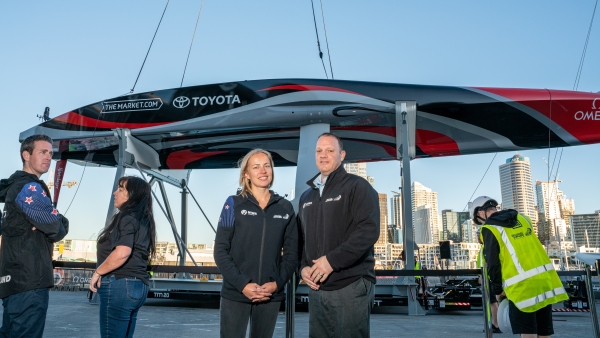On this page:
- Improving forecasting models to improve forecast resolution and accuracy
- Momentum Partnership
- Remote sensing and satellites
NIWA’s research into forecasting weather systems aims to increase the resilience of New Zealand communities to weather-related hazards.
The need for weather and climate predictions is rising. The frequency and severity of extreme weather events is increasing, as is our exposure to risk as the world’s population and infrastructure both grow.
NIWA’s forecasting research is improving our understanding of, and ability to numerically simulate, New Zealand’s weather. This numerical simulation, made possible by supercomputers capable of processing trillions of calculations a second, is known as Numerical Weather Prediction (NWP).
Understanding the key processes that influence the weather’s predictability will enable more accurate forecasts of high-impact events, leading to improved readiness, reduced losses and faster recovery.
NIWA’s High Performance Computing Facility underpins all our forecasting research. You can read more about this facility here.
NIWA’s High Performance Computing Facility is crucial to our forecasting research. Pictured above are two of the three supercomputers which make up the HPCF. These are housed in NIWA’s Greta Point campus in Wellington.
Improving forecasting models to improve forecast resolution and accuracy
NWP modelling and reanalysis
NIWA’s NWP modelling and reanalysis research is helping NIWA to:
- more accurately forecast New Zealand’s weather at the landscape-scale
- characterise New Zealand’s recent climate so that recent changes and trends can be identified and risks to New Zealand’s building stock, infrastructure and economy due to weather-related hazards can be assessed.
A core component of this work involves ongoing development and upgrades to the main NWP forecasting models NIWA uses, called NZLAM and NZCSM. These are the key sources of short-term forecast information used to underpin NIWA’s forecasting services.
Ensemble forecasting
NIWA is also working on the development of an ensemble model – which involves simultaneously running multiple instances of a forecast model with slightly different initial conditions or different science configurations. This enables better sampling of the inherent uncertainty in the weather and our models, to produce a range of possible forecast scenarios.
This ensemble of forecasts makes it possible to see which scenarios are most likely to occur and to estimate the chance of reaching or exceeding certain thresholds, such as rainfall exceeding 100mm.
Ensemble forecasts are becoming an increasingly important part of forecasters’ toolkits – giving them more confidence in what the weather’s going to do.
Image: Screenshot from NIWA’s ensemble forecast site.
High resolution forecasting to support New Zealand’s 2021 America’s Cup defence
NIWA has been working with the UK Met Office to configure and implement a sub-kilometre-scale NWP model to provide forecasting support for Emirates Team New Zealand.
The model couples atmospheric forecasting with wave forecasting; using techniques developed for the sailing events at the 2012 London Olympics by the UK Met Office.
Image: NIWA forecasters Nava Fedaeff and Chris Brandolino stand in front of the newly christened Te Reutai in Auckland’s Viaduct.
Momentum Partnership
About the Momentum Partnership
New Zealand is a founding member and key contributor to the Momentum Partnership – a global partnership that develops one of the world’s foremost weather forecasting and climate prediction systems.
This international collaboration involves a group of five core countries partnering to develop world-leading weather and climate forecasting technology. This technology encapsulates our scientific understanding of how the atmosphere, earth and oceans work, allowing us to make predictions of the future from hours out to centuries.
NIWA is New Zealand’s contributor to the partnership, helping develop its technology and sharing its information with other organisations and researchers around the country. Along with New Zealand, the five core members of the partnership are the UK, Australia, India and Singapore. In addition, Republic of Korea, South Africa, Poland and the US Air Force are associate members.
The model has proved invaluable in forecasting tropical cyclones, fire weather risks, flooding and sea-level storm surges. It is increasingly used in global transport management, assessment of volcanic eruptions and responding to human health and biosecurity threats.
Read more about the Momentum Partnership on the UK Met Office's website.
Remote sensing and satellites
Precise and accurate knowledge of current conditions is a critical prerequisite for forecasting. One of the ways NIWA enables this is through the operation of satellite receivers at Lauder in Central Otago and Maupuia in Wellington.
These receivers download data from satellites that collect weather and atmospheric information as they pass overhead. The data is then made available in near-real time to the World Meteorological Organization to be used by forecasting centres around the globe as well as in NIWA’s own forecasting and meteorological research.
Image: Carrying out maintenance on NIWA’s satellite receiver at Maupuia in Wellington







